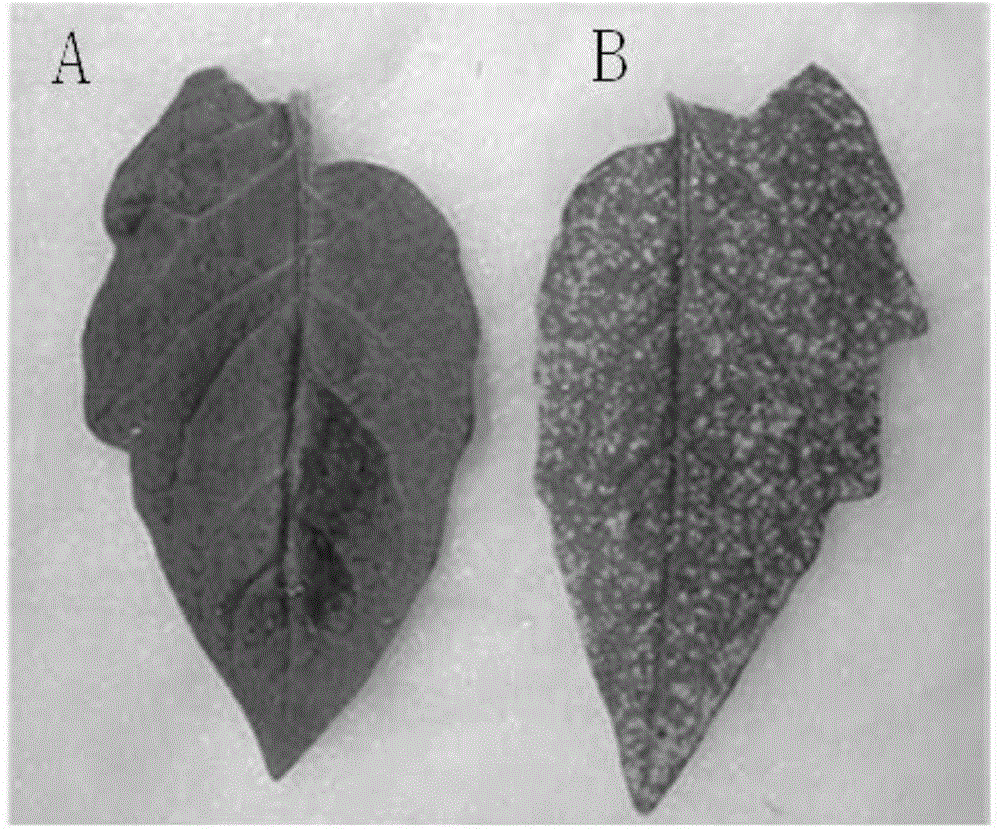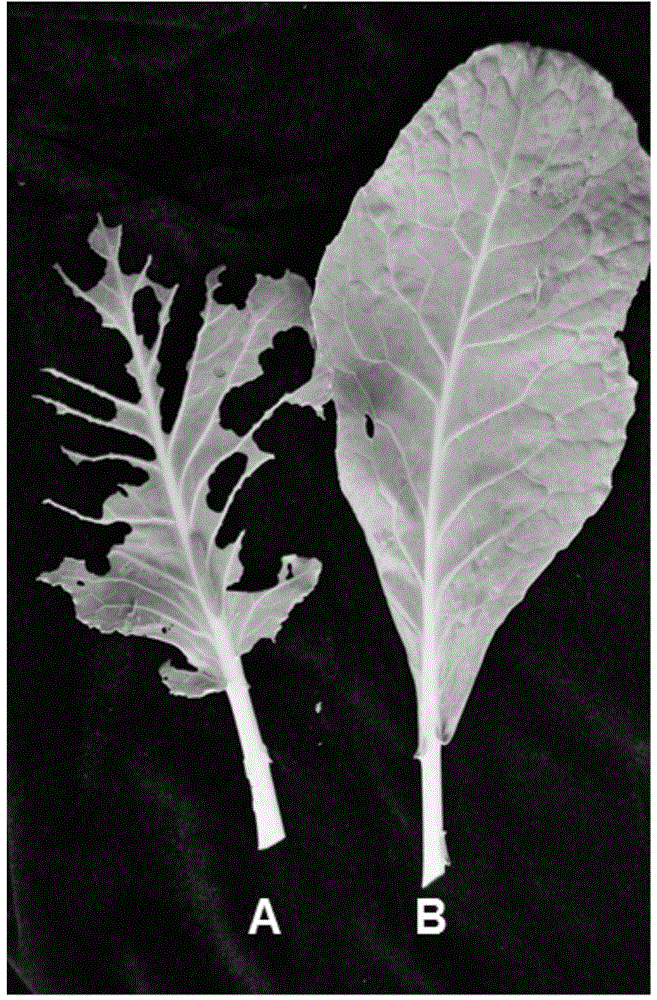Method for enhancing insect feeding resistance of plants through beta-ocimene
A technology of ocimene and plants, which is applied in the field of enhancing the ability of plants to resist pests and feed, and can solve the problems of environmental ecology and human health, high cost and difficult to promote in large areas.
- Summary
- Abstract
- Description
- Claims
- Application Information
AI Technical Summary
Problems solved by technology
Method used
Image
Examples
Embodiment 1
[0017] Example 1 Effect of β-Ocimene Treatment on Spodoptera litura Larvae Feeding Arabidopsis
[0018] Two plants of Arabidopsis thaliana that had grown for 20 days were placed in two cleaned and air-dried desiccators; β-ocimene was added to one of the desiccators so that the final concentration of β-ocimene in the desiccator was 5 μmol / L, and quickly cover the lid, as a treatment group; do not add any substance in another desiccator, as a blank control. The two desiccators are sealed, and then placed in a plant growth chamber with a temperature of 20-25° C., an illumination of 8000-10000 Lux, and a relative humidity of 60-75%. After 16 hours, the plants were taken out, and the two plants were put into a fume hood to remove β-ocimene in the air. After 10 minutes, they were transferred to the growth room and placed side by side. Each plant was inoculated with 5 second instar Spodoptera litura larvae. The results were observed overnight.
[0019] The results showed that the ...
Embodiment 2
[0020] Example 2 Effect of β-ocimene treatment on tomato eating by Tetranychus urticae
[0021] Surround a circle of about one square meter on the ground with an agricultural film, put 5 potted tomato potted plants growing for 25 days in the circle, and the film circle is 10 centimeters higher than the plant; put three glass slides on the ground in the circle, Arrange in an equilateral triangle, drop 100 μL of β-ocimene on each slide, and let it volatilize freely. After 8 hours, the final concentration of β-ocimene in the film circle was measured to be greater than 0.5 μmol / L, and the plant was transferred to the fume hood to remove the β-ocimene in the air. After 10 minutes, the temperature was changed to 20-25°C. ℃, light is 8000-10000Lux, relative humidity is 60-75% in the plant growth room. Select 5 leaves from the plants treated with β-ocimene and those without β-ocimene treatment, inoculate 15 Tetranychus urticae on each leaf, and check the degree of damage after 24 hou...
Embodiment 3
[0023] Example 3 Effects of β-Ocimene Treatment on Rapeseed Rapeseed by Pieris rapae Larvae
[0024] In an artificial climate box of 2 cubic meters, place 3 potted rape plants that have grown for 40 days; add β-ocimene in the artificial climate box, and move the artificial climate box to a temperature of 20-25 ° C and a light of 8000 -10000Lux, in a plant growth chamber with a relative humidity of 60-75%. After 5 hours, the final concentration of β-ocimene in the artificial climate box was 2.5 μmol / L, take out the plants, put the two plants in a fume hood to remove β-ocimene in the air, and transfer them to the growth room after 10 minutes , placed in the same growth chamber as untreated plants, each plant was inoculated with 5 cabbage larvae, and the results were observed after 24 hours.
[0025] The results showed that almost no food was eaten by Pieris rapae larvae on the plants treated with β-ocimene (see image 3 B), while the leaves of the plants treated with β-ocimene...
PUM
 Login to View More
Login to View More Abstract
Description
Claims
Application Information
 Login to View More
Login to View More - R&D
- Intellectual Property
- Life Sciences
- Materials
- Tech Scout
- Unparalleled Data Quality
- Higher Quality Content
- 60% Fewer Hallucinations
Browse by: Latest US Patents, China's latest patents, Technical Efficacy Thesaurus, Application Domain, Technology Topic, Popular Technical Reports.
© 2025 PatSnap. All rights reserved.Legal|Privacy policy|Modern Slavery Act Transparency Statement|Sitemap|About US| Contact US: help@patsnap.com



